Singapore isn’t big, only 736km2, about half the size of London, but it has plenty to offer.
It is a great stopover destination if you are coming from Europe and travelling to somewhere like Bali, Australia or New Zealand. Visiting as a stopover gives you a break in a long journey, reduces your jet lag, and helps the environment if you visit as one holiday instead of two.
We visited for a week as part of a multi-country holiday. I don’t mind long flights, but stopping at Singapore did allow us to adjust to a new time zone before moving on. Also, it didn’t cost anything extra to our overall flight cost.
Free tour for layover/stopover
Even if you don’t want to spend a long time in Singapore, you could consider taking a free city tour. If your transit time is between 5 ½ hours and 24 hours, you can choose one of the three bus tours offered, which last 2 ½ hours and are conducted in English. It doesn’t matter which airlines you use. If you look at Singapore Airlines, you will find the details.
You do need to book it in advance, and it’s recommended to book as soon as your preferred slot becomes available. If you manage to grab a free tour, it’s a lovely way to break up a long flight, and you don’t have to worry about getting transportation to sightsee and getting back on time.
When to go
If you visit as a stopover, then your choice of when to visit will probably be based on the best time to visit your primary destination.
The best time to visit Singapore is from April to May, when the humidity is lower and rainfall is less frequent.
The wet season is from November to January. You can still enjoy the place, just remember to pack an umbrella.
You might want to plan your visit to coincide with one of the festivals. Singapore’s National Day is celebrated in August, marked by numerous festivities and fireworks. You could enjoy a waterbombing beach party on Sentosa. There is also the Hindu festival of Deepavali. Pongal, the Indian harvest festival, or see the Christmas lights.
What to see
Supertree Grove
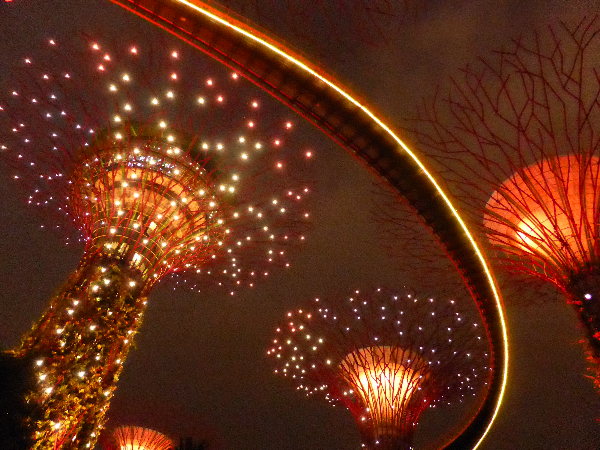
I have started with this because in every holiday magazine of Singapore, they nearly always show a photo of these trees. Supertree Grove is a series of man-made towers that range in height from 25 to 50 meters and are designed to resemble trees. The towers are vertical gardens with 162,900 plants and over 200 species. Some of the towers store solar energy.
For S$14, you can visit the observatory at the tallest tree and see views of the Marina Bay area.
Alternatively, for the same price, you can walk along a 128m aerial walkway that is 22 metres above ground.
The best part is the free light and sound shows at 7:45 and 8:45 pm every evening. You can listen to the music while the trees come alive with light. There are reports that it can get very crowded, but when we visited, we could lie wherever we wanted and look up at the trees to take in the show. Maybe there was something else going on that day. The show is interesting and great for taking photos of, but in my opinion, not worth travelling a long way to visit just this.
Please note that the walkway and observatory are occasionally closed for maintenance, and a charge may apply for the show during special events.
Cloud Forest and Flower Dome
Near the Supertree Grove are the Flower Dome and Cloud Forest, which are a must-visit if you enjoy plants. The cloud forest has one of the world’s tallest indoor waterfalls. You can then walk on aerial walkways and admire the plants and fauna found in cloud forests. Good luck finding the miniature orchids; you need a magnifying glass to see them.
The Flower Dome is in the world’s largest greenhouse. It showcases plants from various parts of the world, including the Mediterranean, South Africa, and Australia. You can see the Baobab tree, which is one of my favourite trees. They often host special events. At the time of writing, they are featuring roses and the legend of King Arthur. Last year, they had Impressions of Monet, which sounds interesting, mixing art with the flowers. If you are a foreign visitor, you must purchase tickets for both attractions together. I have heard that you can buy tickets separately when you are there, but I’m not sure if that’s true.
Marina Bay
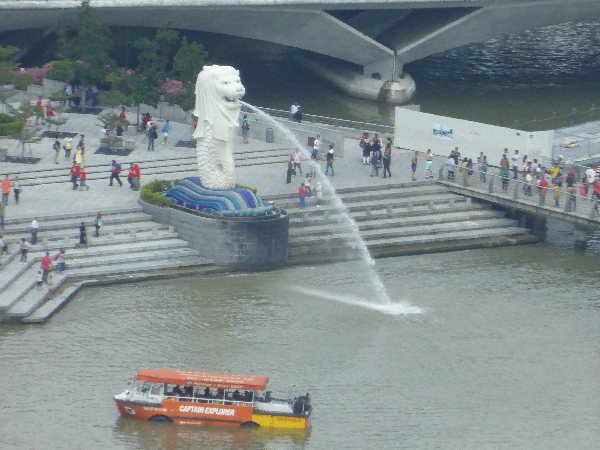
This is the area around the bay which has tall skyscrapers and an incredible skyline, especially at night when it is all lit up. The light show outside the Marina Bay Sands hotel is free to everyone. You will find the Merlion statue here, Singapore’s mascot. It is a mythical creature with the head of a lion and the body of a fish. It isn’t a big statue, but it is very popular, so you might have to queue if you want a photo with it. There are also restaurants and cafes around the bay.
Sands Skypark Observation Deck
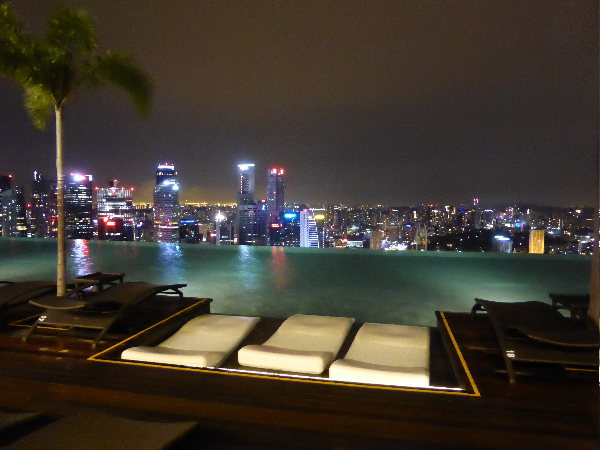
This observation deck, located at the top of the 56-story-high Marina Bay Sands hotel, Tower Three, is open to the public. The views over the marina are great both during the day and at night. However, it is extremely popular at night, especially at sunset, so I recommend booking your tickets in advance.
The view from the top isn’t 360 degrees, as the hotel side is blocked off. If you are staying at the Marina Bay Sands hotel, you can get to the whole of the observation deck, including the public section, by using your hotel key at the gate separating the two sections. The public section’s view isn’t much different from the hotel’s observation deck, and it can be crowded.
There are bars and restaurants at the top, but they have to be booked in advance. Note that some people book a restaurant for the view, but they end up being seated nowhere near the window.
Universal Studios
Most people know what to expect at Universal Studios if they have been to one before. There are seven themed zones in Singapore. To save time, it’s a good idea to research what interests you before you arrive and plan what you’d like to see. You can download their app for the latest information. There are free water filling stations available, so please bring your water bottles.
The Zoo
I don’t usually visit zoos unless they have something unique to offer. There are five parks here that are part of the Mandai Wildlife Reserve: the Zoo, the Bird Park, the River, Rainforest Wild ASIA and the Night Safari. We only did the Night Safari, but if we return, I would like to try the Bird Park and the River, as they sound interesting. The Rainforest Wildlife Reserve could be a hit with children; the younger ones would enjoy bouncing on the nets over the animal areas, while the more energetic individuals can take a free-fall canopy jump.
You can purchase a multipass, which offers higher discounts for visiting more parks. You can spend up to 5 days visiting the parks, but please note that you are limited to one visit per park.
When we arrived at the Night Safari, it was raining hard, and the small show before it opened was cancelled. You can catch a tram or walk around the park. We decided to do both. We caught the tram first as it was still raining. Then the rain stopped, so we walked along the paths in the dark.
If we had visited the zoo in daylight, I would have known they don’t have many cages but prefer to use more natural methods of keeping the animals in place, such as ditches and rivers. When I came across the first animal in the semi-darkness, I was convinced it could reach me; it wasn’t until later that I could see the ditches.
There weren’t many people around, and we were often the only people walking along the paths. This might be because it had been raining. Sometimes we could hear an animal making a noise, but couldn’t see it. At other times, we could spot an animal but could not make out what it was in the gloom. I thought I was extremely brave to choose to walk through the bat enclosure. During the daytime, I would have no problem, but when it’s dark and the bats are flying around, it’s a different matter.
The trams run from 7:00 pm to 11:20 pm and take about 30 minutes. A night safari is an excellent way to observe nocturnal animals, but walking around in the dark, spotting glowing eyes, was the highlight for me. If you want to see lots of animals and learn about them, I recommend visiting during the daytime or doing both.
Orchard Road
This is the ideal destination for shoppers. There are shopping malls, high-end shops and high street shops. There are also plenty of restaurants and cafes so that you can take a break from your shopping spree.
Little India and Chinatown
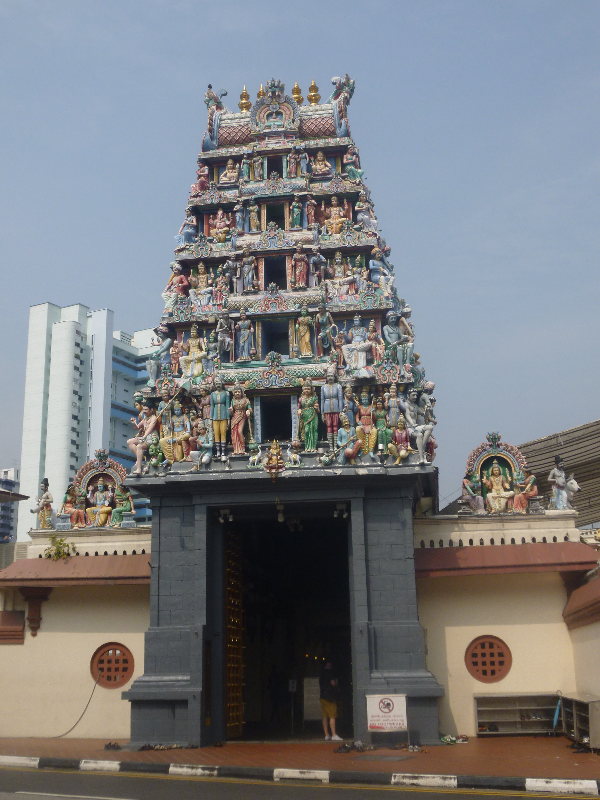
These areas show the Indian and Chinese cultures. You can try one of the restaurants and specialist shops. There is a food court in Chinatown which you might like to try. If there is a Chinese festival, such as the Chinese New Year, it is worth visiting. As we weren’t interested in shopping or eating when we visited, we found little to do and didn’t spend long here.
Singapore Flyer
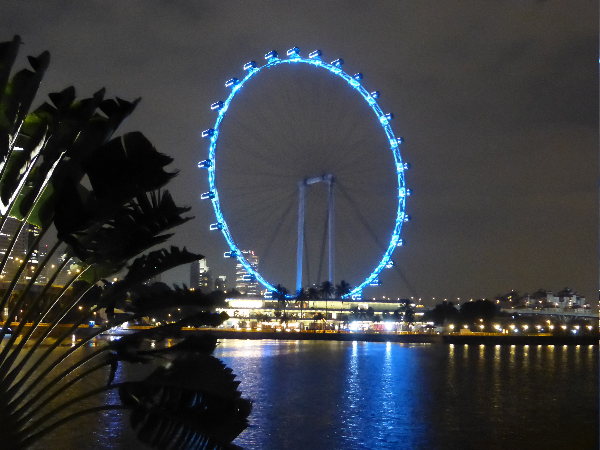
This is a 165-metre-tall Ferris wheel offering great views. If you have been on the London Eye, this is similar. It features air-conditioned capsules that accommodate 16 – 28 people, allowing you to move around or sit on the seats in the centre. The ride takes 30 minutes.
If you want to elevate the experience, you can opt for a Singapore Sling cocktail, enjoy a meal (they allow you a bit extra time), or hire the whole capsule, perhaps so you can propose while taking in the view.
You don’t need to pre-book, but it’s best to book in advance to avoid disappointment.
Sentosa Island
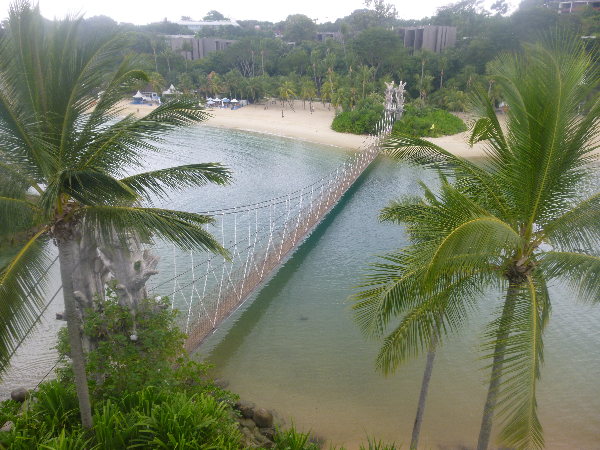
You can reach this island by car, monorail or cable car. We used the cable car and enjoyed the journey. The island boasts numerous attractions, including Universal Studios, a large aquarium, and Madame Tussauds. But if you want to spend less money, you could go to one of the beaches.
We visited Palawan Beach, one of the quietest beaches in the area. They monitor the water quality, which can sometimes be poor, and will not allow you to swim if it is not good. Later, we were instructed to get out of the sea at a nearby beach because a thunderstorm was approaching. I appreciate that there are people here to take care of us.
The beach looks nice with the trees in the background, but there were numerous cargo ships lined up in the sea, which distracted from the peaceful natural vibe.
From here, you can walk across a suspension bridge to an island with a sign saying it is “the southernmost point in continental Asia”.
Singapore Botanic Gardens
This is a free UNESCO site, open from 5 am to midnight, although a charge applies for visiting the orchid section. It’s a lovely place to rest in the shade or pick up food from the café or restaurants.
If you have children, they can play in the children’s play garden, which is suitable for children up to 14 years old. It is usually closed on Mondays; you will need to bring swimsuits and towels.
I suggest you download their map, as the place is massive, and consider following one or two trails or having a picnic in the shade by a lake.
Festivals
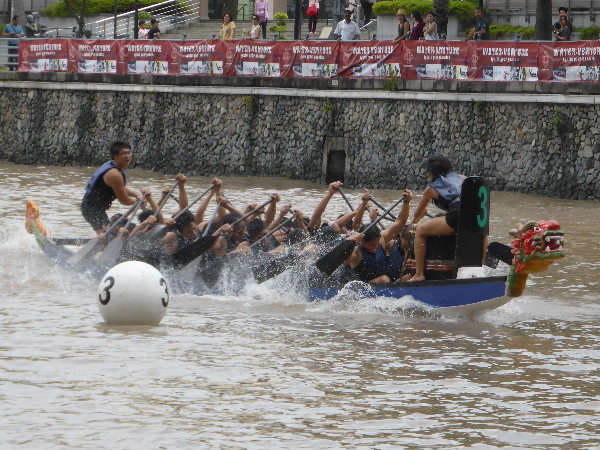
Singapore has many festivals throughout the year, reflecting the different cultures. There is the Chinese New Year, the Hungry Ghost Festival, the Hindu Deepavali, also known as the Festival of Lights, and the Thaipusam Festival, as well as the Buddhist Vesak Day.
The Singapore River Festival is a few days of celebration and entertainment along the River, with a different theme each year. This year, they are celebrating with a design theme. In previous years, they have hosted light shows, kite competitions, and numerous market stalls.
The Dragon Boat Festival is a fast and exciting competition to watch. Teams from around the world compete with each other. Each dragon boat typically has 20 paddlers, a helmsman, and a drummer. There is more than just boats; there are dragon dances, rice dumplings, storytelling sessions, dumpling taste challenge and lots of busking performances.
Where to stay
I don’t often recommend expensive hotels unless they have something special to offer. We stayed at the Marina Bay Sands hotel and splashed out on one of the higher rooms, and it was worth it.
If you have to make every penny justify itself, then you could do what we did. We booked a budget hotel for the first few days and did a lot of sightseeing. Then, as soon as it was check-in time, we checked into the Marina Bay Sands. We did some sightseeing while staying at this hotel, but it was all within the local area. We wanted to spend as much time as possible enjoying their facilities.
The hotel has a large infinity pool on its top-floor observation deck. It can get crowded, but I went up as soon as it opened in the morning and was lucky enough to have the pool to myself. They also have a light show outside the hotel. This hotel impressed me not just because of the pool or light show, but also because of its high standard of customer service. Although it is a large hotel, the staff at the restaurant remembered my name throughout the meal.
There are plenty of more reasonably priced hotels in Singapore. The Marina Bay area has numerous sights to see, but it is also a pricey location. The cheapest area is Chinatown. Families might prefer Sentosa, a resort island, or if you like shopping, then choose somewhere near Orchard Road.
What to eat
Singaporean cuisine is a blend of Indian, Malay, and Chinese influences.
Laksa is a spicy noodle soup combining Chinese and Malay ingredients. It might include fish, prawns, cockles, and some vegetables, as well as coconut milk.
Hainanese Chicken Rice is a dish consisting of boiled chicken, flavourful rice, and a rich sauce. There are different versions, but it is usually served with chilli sauce and garlic.
Kaya Toast is toast with a coconut jam. It is often served with a coffee as a snack or with a boiled egg for breakfast.
Chilli crab is fresh crabs cooked in a spicy chilli-tomato sauce. It is often served with steamed buns and rice. You need to crack open the crab’s shell, which can be a little messy.
Nasi lemak is a Malaysian-inspired meal. It is rice cooked in coconut milk and pandan leaves, and served with various side dishes. The side dishes could include chicken, fish, vegetables, or boiled eggs. It is also normal to include a spicy chilli paste and maybe fried anchovies.
If this food seems a bit too adventurous for you, don’t worry; you’ll also be able to find Western food.
Transport
Transport in Singapore is straightforward.
Trains – they have the MRT (Mass Rapid Transit), which is extensive and can usually get you near your desired destination. It costs only 1 or 2 S$ and trains run very frequently. It can get crowded during the morning and evening rush hours. You can catch a train from Changi Airport to downtown in under an hour. You can pay with an EZ-Link card or via contactless payment. Please have a look at the Explore Singapore App; you might find it helpful.
Buses – they are clean and air-conditioned. Bus stops are easy to recognise and usually have a few seats and a shelter that shows the number of the bus that stops there. You can also pay with an EZ-Link card or a contactless payment method. There are Apps which tell you when the next bus will arrive, but they don’t seem very reliable. I suggest using Google Maps to find the bus numbers you need.
Taxis and Ride-Hailing Apps – We used taxis when travelling with our suitcases; they are more expensive than public transport, but they make life easier. Grab is a popular app. You can pay for some taxis with EZ-Link.
EZ-Link cards can be purchased at the airport, transport offices and 7-Eleven Stores. They cost S$5 for the card, and you need to put at least S$5 on the card. They are a prepaid card which is easy to use.
Language and money
The currency in Singapore is the Singapore Dollar (S$). However, for a short break, you could probably get away with only using your credit cards.
If you speak English, you should have no trouble in Singapore as most people speak it. They also speak Mandarin, Malay, and Tamil, which, along with English, are the four official languages of the country.
They also speak Singlish, which isn’t a language but a variety of English with elements of Chinese and Malay. The government would prefer that they stick to standard English so they can communicate with the rest of the world, but it is still widely used in some communities.
Summary
I have only mentioned a few of the attractions in Singapore; there are plenty of things to do and enjoy. It isn’t cheap, especially if you fill your day up with paying attractions. However, if you are only here for a short stopover, the overall price will be limited.
Singapore is a mixture of modern skyscrapers and natural attractions. It is highly developed and densely populated, yet still manages to include parks and an ever-expanding zoo.
This is where East meets West. You can admire the tall skyscraper at the Marina and later see a man sewing on a sewing machine in Little India.
Singapore is a great place to visit, and if you only have a short time, it won’t be easy to decide what to choose and what to miss. There is so much choice; at least you will find something you’ll enjoy.
Next time you book a long trip with a stopover in Singapore, be sure to visit this country. You will probably find you want to stop here every time you can in the future.
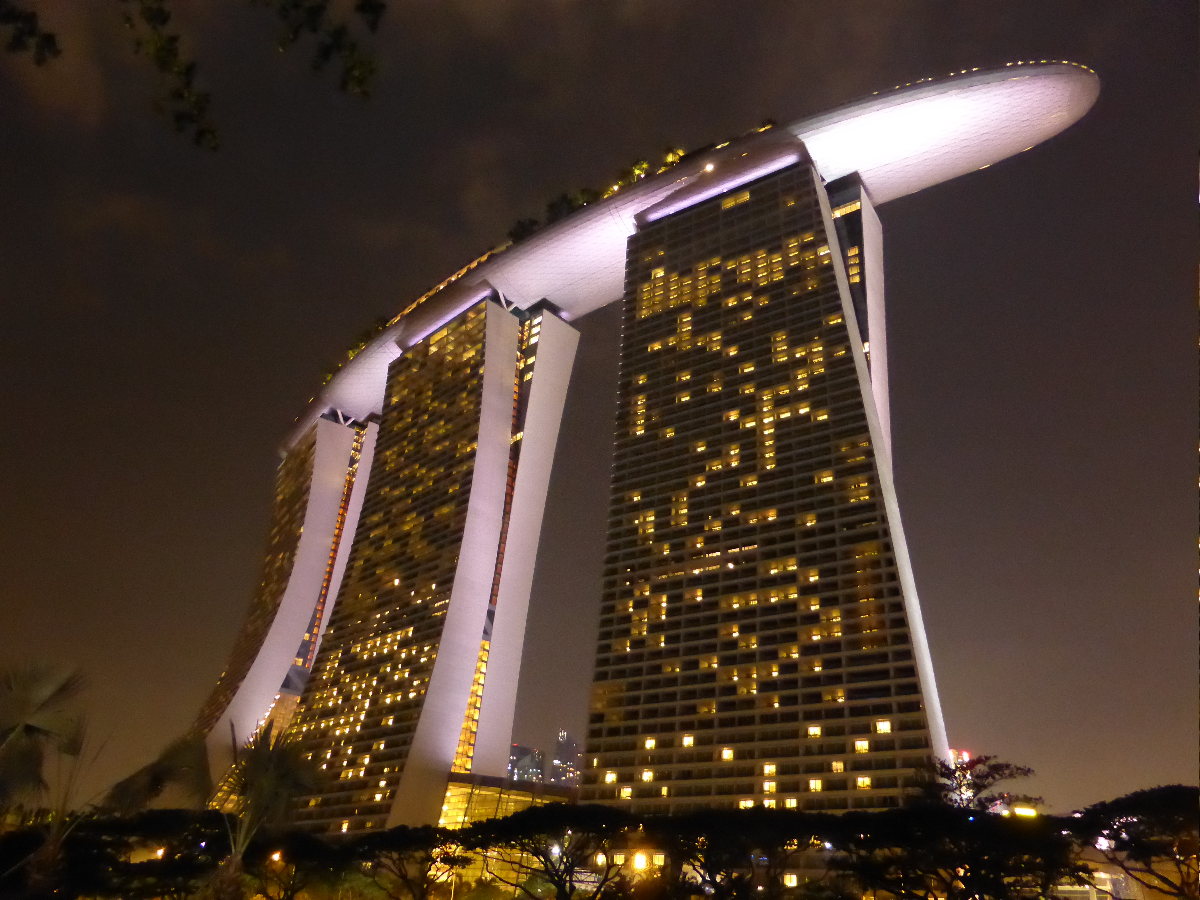
Leave a Reply